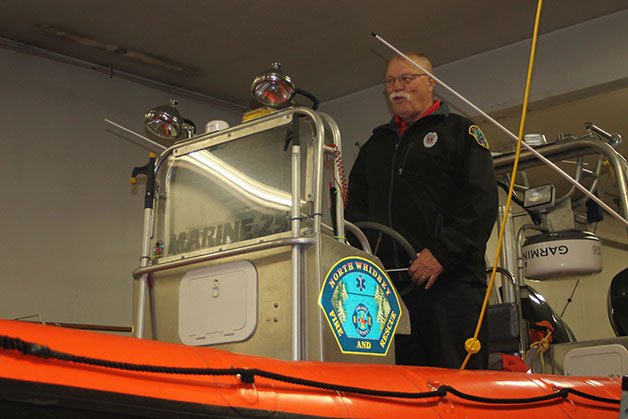From boats that are dead on the water to vessels on fire, North Whidbey Fire and Rescue crews respond to numerous calls from the waters surrounding Coupeville to Deception Pass.
The Marine Search and Rescue team is composed of 14 certified search-and-rescue team members
Of course, it’s not always as simple as that, said Capt. Jim O’Connor, who manages the team.
Because people are encouraged to report any unusual sightings on the water, the team has investigated everything from a ball of kelp to boats that appear to be on fire, but are simply emitting white smoke.
Not all calls are so easy to handle. Marine Search and Rescue, or MSAR, responds to about 40 marine rescue calls a year, many of which are in Deception Pass.
“Deception Pass is one of the most dangerous pieces of water on the West Coast of the United States,” O’Connor said.
Many kayakers and sailors find themselves in trouble in that area, which is when the search-and-rescue team is called in.
O’Connor said he doesn’t mind the work, though, because what he does is his passion.
A former Navy man, O’Conner has been around boats all his life, and many of the jobs he’s held involved being on a boat.
After 9/11, O’Connor said he wanted to reenlist in the Navy, but was told he was too old. He joined the Coast Guard Auxiliary instead, and worked in the dispatch office and on rescue boats as a volunteer.
It wasn’t until his son, a firefighter and member of the Navy Reserves, was deployed to Iraq that O’Connor said he became a firefighter as well.
“The chief believes in using resources to the best of their ability, and he knew I had been around boats most of my life,” O’Connor said.
“(The chief) asked me if I wanted to be a part of this program, and I eventually ended up being in charge of it.”
After he took over the Marine Search and Rescue program, changes were made. A policy was implemented requiring members to meet qualifications, just as they did to become firefighters and EMTs.
“What we decided to do, instead of reinventing the wheel, we took the book written by the people who do it the best,” O’Connor explained.
Their training and qualifications are centered around the United States Coast Guard Crew and Coxswain Manual.
Classes include navigation rules, boat-handling courses, communications courses, search and rescue procedures and more.
“For every part of this book, there’s a classroom section and then there’s an on-the-water session,” O’Connor said.
“Our qualifications are pretty simple: they’re the exact same as the US Coast Guard,” he said. “Subtract nothing.
So when you see this boat out on the water, you can know that the people who are in it, have been tested to the same level as the guy in the Coast Guard boat is.”
To be certified, members of the search and rescue team go through the entire manual before they get their practical test, which O’Connor said is administered by an active-duty member of the Coast Guard.
“The final say-so is that (of the) U.S. Coast Guard Petty Officer, because that takes all of the good ol’ boy stuff out of it.”
Recently, the MSAR team opened up to anyone from the Oak Harbor Fire Department and the Naval Air Station Whidbey Island Search and Rescue.
Three members of the Oak Harbor Fire Department are in training to join the team.
The people who join the search-and-rescue team are the people who “want to do a little more,” O’Connor said.
“This is not a big excitement thing, because after you’ve been out on this boat once or twice, and it’s 30 degrees outside and it’s raining, you find out real quick that this sucks,” said O’Connor.
“This is cold. And that rain hitting my face? It hurts.”
“It’s not a status thing. They just want to do more, he said. “They just want to give more.”



